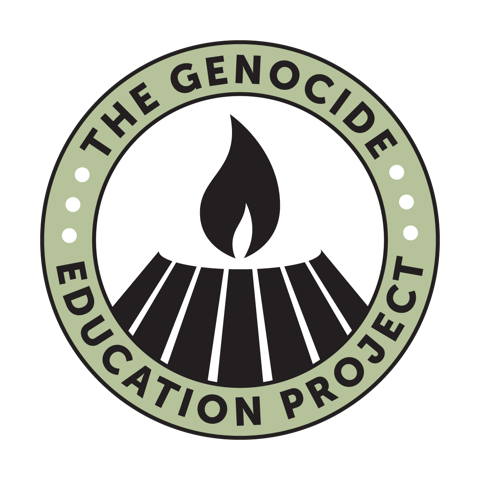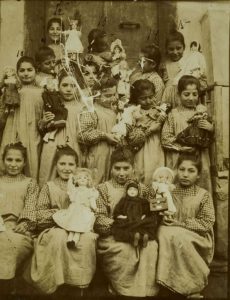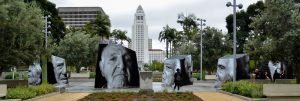NEW! Using historical fiction to teach the Armenian Genocide: “Who She Left Behind” By Victoria Atamian Waterman
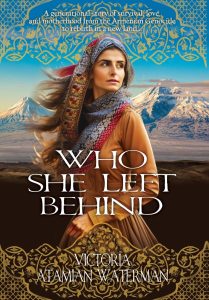
Reading memoirs and historical fiction with students supports learning while exploring different eras and geographic locations. To prepare students for reading “Who She Left Behind,” a historically based account of (more…)
NEW! The stories “digniks” tell: Preserving Armenian culture through artifacts

Deepening students’ understanding of a culture allows them to engage more fully with the extent of the damage and long-term consequences of genocide beyond the finite number of deaths.
New! Goodbye, Antoura: Using Memoir to Teach the Armenian Genocide
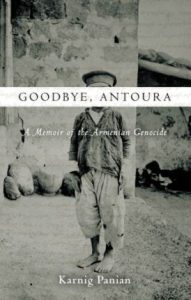
Reading memoirs with students supports learning about historical events while exploring different eras and geographic locations. Goodbye, Antoura is a powerful memoir about childhood experience of survival during the Armenian Genocide. To prepare students for reading Goodbye Antoura, teachers are advised to introduce the historical and cultural conditions of Ottoman Armenians during the late 1890s and early 1900s. (more…)
New! The Armenian Genocide – A Brief History: Background Reading
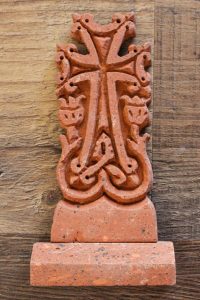
With a focus on literacy, this multi-day lesson uses geography and historical reading to help students learn about the Armenian Genocide of 1915 and the ongoing territorial disputes that led to the 2023 genocide of Armenians in Artsakh. This piece is a great segway into a longer study of the Armenian Genocide, WWI, or Armenian Genocide memoir or historical fiction. (more…)
New! Under the cover of World War 1: The Armenian Genocide
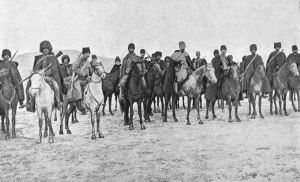
This short lesson is intended as an introduction to a broader study of the Armenian Genocide, WWI, and literature. (more…)
New! One Family’s Key to Survival
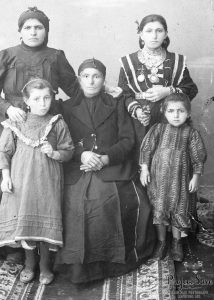
Explore how an everyday object saved a family during the Armenian Genocide.
NEW! GenEd Armenian Genocide Teaching Trunks

The Genocide Education Project is excited to share its new GenEd Armenian Genocide Teaching Trunks – Free for California teachers to borrow at no cost (more…)
Resistance, Agency, and Empowerment
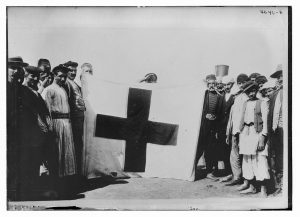
The Resistance, Agency, and Empowerment teaching unit explores the concept, forms, and examples of resistance through which students learn about genocide. Examining individual and collective actions in response to the Armenian Genocide and its denial as it was being carried out and over the course of more than a century thereafter, the unit highlights the long, continuing legacy of genocide and the value of individual choice and cooperation in affecting positive change. (more…)
Armenian Life in the Ottoman Empire Before 1915
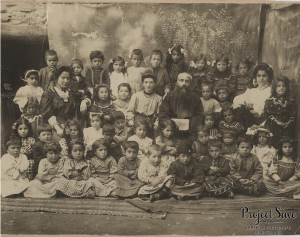
Life under the Ottoman Empire had its own unique challenges and opportunities for Armenians, as is evident through this collection of pictures, courtesy of the Project Save Armenian Photo Archives, Inc. This lesson focuses on analyzing primary sources (more…)
“Bird Letters” Lesson & Activity
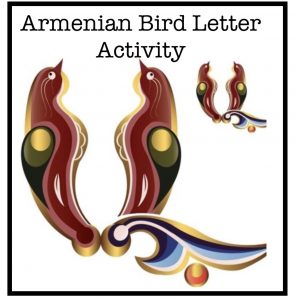
Understanding other cultures means exploring their languages, beliefs, art, traditions. Central to the Armenian identity is the unique language and alphabet, a deeply held religious faith, and their unique expression of these two components in “illuminated manuscripts” (handwritten books decorated with elaborate designs or miniature pictures.) These ancient texts are still revered by Armenians… (more…)
Stages of Genocide: A Toolkit for Educators
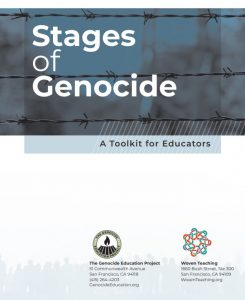
Studying genocide is a critical part of a student’s understanding of both history and of current events. The Stages of Genocide Toolkit is designed to help teachers cover the topic in a meaningful and incisive way, introducing students to the phenomenon of genocide itself and then examining it through multiple case studies. (more…)
Operation Nemesis: Using a murder trial to teach about the Armenian Genocide
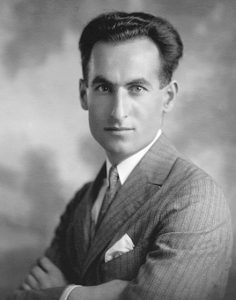
Soghomon Tehlirian, a survivor of the Armenian Genocide, assassinated Talaat Pasha, the primary architect of the Armenian Genocide, in Berlin in 1921. Although there was no doubt Tehlirian committed the murder, the jury found him not guilty, after hearing 2 days of testimony about the genocide planned and executed by Talaat Pasha. The trial helped motivate Raphael Lemkin to coin the word “genocide.”
Survivor Objects: the Zeytun Gospels
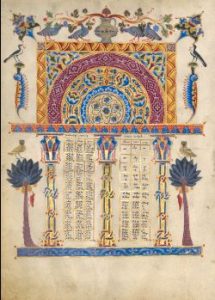
The Zeytun Gospels, an 800-year-old manuscript, survived the Armenian Genocide. Understanding the life of an object like the Zeytun Gospels illuminates the devastation of genocide. It also shows how justice, even in small doses, can be found amidst the ruins left by genocide. (more…)
Human Rights and Genocide: A Case Study of the First Modern Genocide of the 20th Century

This comprehensive teacher’s manual focuses on the Armenian Genocide of 1915 during which 1.5 million Armenians, half of the Armenian population, were systematically annihilated. It includes a 1-day, 2-day, and 10-day unit with all the materials teachers will need, including more than two dozen overheads, interactive classroom exercises and more.
Discussions include a wide range of topics related to the Armenian Genocide: the history of Armenians in the Ottoman Empire, primary source documents, witness and survivor memoirs, maps and political-economic timelines, and the problem of denial.
(more…)
Two Day Lesson on the Armenian Genocide

This is a compressed version of The Genocide Education Project’s ten-day curriculum found in Human Rights and Genocide: A Case Study of the First Modern Genocide of the 20th Century. It is to be completed in two fifty-minute class periods, with 2 homework assignments, one before and another between the lessons. The lesson includes the definition of genocide, historical background on the Armenian case, a review of other major genocides, a short national TV news piece, and readings from survivor testimonies.
Finding a New Life: The Armenians of Watertown
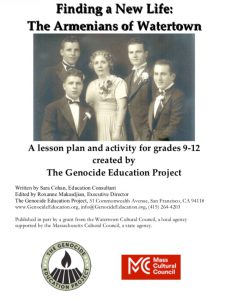
Finding a New Life: The Armenians of Watertown is an introductory unit providing a background to the history of the Armenian Genocide, the effects of the genocide on subsequent generations in Watertown, and universalizes the experience for other groups who have found safe haven in Watertown. Finding a New Life illustrates the continued pain and damage that genocide brings and the fortitude of those searching for the truth.
Deli Sarkis: The Scars He Carried
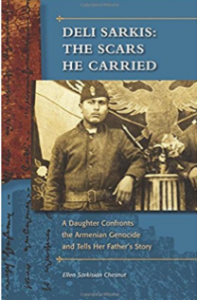
This lesson plan is accompanies readings from the book Deli Sarkis: The Scars He Carried by Ellen Sarkisian Chesnut. The lesson was created by Frank Perez, World History teacher at San Benito High School in Hollister, CA. (more…)
THE PROMISE lesson plan: Concepts of Resistance
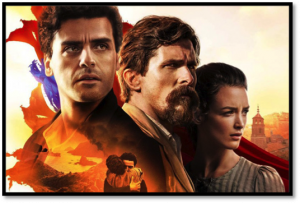
“Our revenge will be to survive,” says the character Ana to Michael in the feature film, The Promise. This lesson introduces students to the efforts by genocide victim populations to respond to the violence against them. Using the feature film, The Promise, students are guided through readings, discussions, and exercises about the Armenian Genocide and the different forms resistance can take.
The Other Side of Home
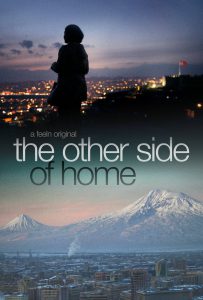
GenEd has created a discussion guide to accompany this compelling 40-minute documentary which explores a Turkish woman’s discovery of her hidden Armenian heritage and the legacy of genocide denial. “The Other Side of Home” is now available to view through public library online streaming services, Kanopy, Hoopla, and Overdrive, using your public library card number (If you don’t have a card, many libraries now accept online library card applications.)
THE PROMISE: film study guide
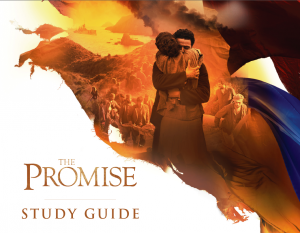
The film, The Promise, released in 2017, is the first major Hollywood dramatic feature recounting the history of the Armenian Genocide of 1915, perpetrated by the Turkish government. The film provides a unique educational opportunity to understand the greatest atrocity and human rights crisis of WWI. It also opens a window onto the German and American presence in the (more…)
Memorializing Genocide: A Tulip Garden
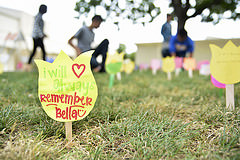
How should genocide be remembered? This lesson and activity begins with a classroom discussion about how communities remember major historical events, including human rights atrocities. Students also learn the allegorical story of Armenian botanist JJ Manissadjian, who studied and catalogued a rare, wild tulip found in the Armenian homeland in pre-WWI Ottoman Empire. The tulip became extinct in the wild, but was cultivated later from seeds Manissadjian had sent to Europe. Manissadjian was imprisoned during the Armenian Genocide, but escaped and immigrated to Europe and the United States. The tulip story is symbolic of the fate of Armenians.
Ten Stages of Genocide

This teaching guide is based on genocide scholar Dr. Gregory H. Stanton’s work “Ten Stages of Genocide” (an update of his previous “Eight Stages of Genocide,” 1996.) The progression of stages is a formula for how genocide is prepared, carried out, and produces long-lasting repercussions. Beginning with prejudice, genocide develops over time, involving the cooperation of a large number of people and the state; This lesson helps students understand genocide as a process that can be corrected and prevented.
Educator’s Guide for “Like Water for Stone” Novel
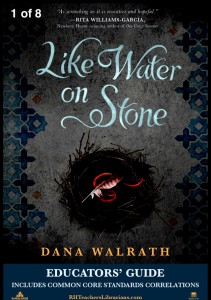
Like Water on Stone by Dana Walrath is fictional account of the Armenian genocide. This novel in verse recounts the flight to America of three Armenian children after the Ottoman Turks confiscate their family’s flour mill and murder their parents. For sixty-three days the children travel on foot, above the tree line of the Caucasus Mountains and through the Syrian Desert, to reach refuge in Aleppo, Syria. Taken in by a sympathetic Arab shopkeeper, the children disguise themselves as Arabs to avoid being forcibly relocated to the Deir el-Zor concentration camp, where starvation and barbarity led to certain death. After three years in hiding, the children finally receive a letter and boat tickets to America from their keri (maternal uncle).
The book’s Educator’s Guide was created for Random House by Judith Turner, a longtime educator at Terrace Community Middle School in Tampa, Florida. It includes pre-reading activities, discussion and activity prompts and a list of Common Core Standards correlations.
They Shall Not Perish: The Story of Near East Relief
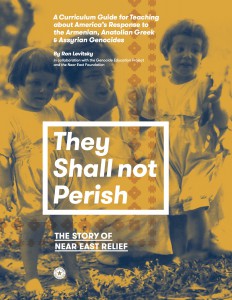
They Shall Not Perish: The Story of Near East Relief is a 32-page curriculum booklet on America’s response to the Armenian Genocide, through the work of the Near East Relief foundation. NER workers courageously bore witness to the genocide and fed, clothed, and provided medical treatment to thousands of refugees. Near East Relief is credited with saving over one million lives between 1915 and 1930, including 132,000 orphan children, in what was the largest international humanitarian effort up until that time.
An Armenian Journey: From Despair to Hope in Rhode Island
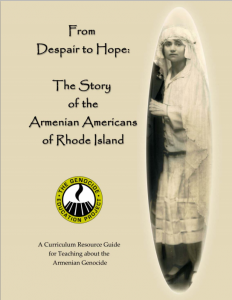
A curriculum resource guide and video documentary created by The Genocide Education Project in cooperation with the Rhode Island Council for the Humanities. The Armenian Journey: From Despair to Hope in Rhode Island provides a background to the history of the Armenian Genocide, the effects of the Genocide on subsequent generations, and universalizes the experience for other groups who have found safe haven in the United States. The video and resource guide illustrates and elucidates the continued pain that the enormous crime of genocide and its denial brings, as well as the fortitude of those searching for truth. (more…)
The New York Times and the Armenian Genocide
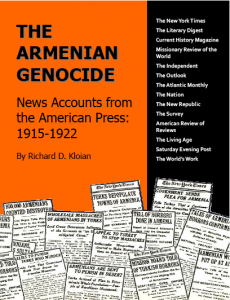
A Lesson Plan based on The Armenian Genocide – News Accounts from the American Press, 1915-1922
This curriculum extracts articles from the book, “The Armenian Genocide: News Accounts from the American Press,” compiled by Richard Kloian (available from GenEd and can be ordered for $35 by emailing). Including 200 New York Times articles, other journalistic accounts, U.S. Ambassador Morgenthau’s personal account of the genocide, survivor accounts, telegrams from the genocide perpetrator, photographs, and more, the book presents a compelling chronicle of the systematic deportations and massacres of the Armenians of the Ottoman Empire, perpetrated by the Turkish governing authorities between 1915 and 1922.
iwitness Photo Activity
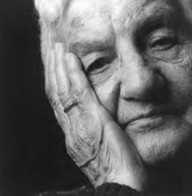
The iwitness photo documentary project was begun by artists Ara Oshagan and Levon Parian in 1995, when they began photographing and later interviewing survivors of the Armenian Genocide.
The photographs were first exhibited at the Downey Museum of Art in southern California in 1999, and later featured in the LA Times Sunday Magazine and many other venues. During the centennial commemoration of the Armenian Genocide in 2015, the exhibit was re-made into a large-scale public art installation on three levels at the Music Center and Grand Park in Downtown Los Angeles.
iwitness provides an ideal vehicle for middle-high school students to explore first-person testimonies of the Armenian Genocide through an artistic, interpretive lens.
Exhibit installation images by Ara Oshagan, Levon Parian, Vahagn Thomassian, Narineh Mirzaeian | www.iwitness1915.org
Genocide and the Human Voice: Nicole’s Journey
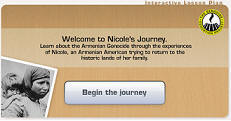
This interactive online classroom provides students a background to the history of the Armenian Genocide and the effects of the denial of the Genocide on subsequent generations. Nicole’s real life journey to the village of her grandmother, now in Eastern Turkey, illustrates the continued pain that genocide brings and the fortitude of those searching for truth.
(more…)
Crimes Against Humanity and Civilization: The Genocide of the Armenians
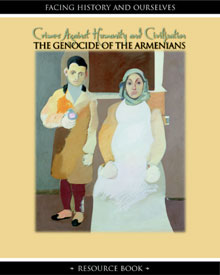
FROM FACING HISTORY AND OURSELVES:
Facing History’s resource book, Crimes Against Humanity and Civilization: The Genocide of the Armenians, combines the latest scholarship on the Armenian Genocide with an interdisciplinary approach to history, enabling students and teachers to make the essential connections between history and their own lives. By concentrating on the choices that individuals, groups, and nations made before, during, and after the genocide, readers have the opportunity to consider the dilemmas faced by the international community in the face of massive human rights violations.
(more…)
The Armenians: Shadows of a Forgotten Genocide

Published by the Holocaust Resource Center and Archives, Bayside, New York for its 1999 Armenian Genocide exhibit, this 23-page booklet includes a brief history on the Armenian Genocide, news coverage, maps, the continuing Turkish government denial, and discussion questions.
Contact The Genocide Education Project for the booklet.
The Armenian Genocide, 1915 – 1923: A Handbook for Students and Teachers
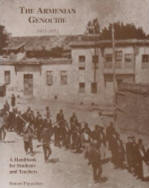
Prepared by the Armenian Cultural Foundation
About the Author: Simon Payaslian holds a Ph.D. In political science (Wayne State University, 1992) and is a Teaching Fellow and Ph.D. Candidate in the Department of History at University of California, Los Angeles (UCLA).
This handbook provides both a historical perspective of the Genocide and an overview of international and national constraints in preventing the genocides that followed, highlighting the world’s inability to deal appropriately with the perpetrators of the Armenian Tragedy.
This book also provides teachers with maps, graphs, and eyewitness accounts as well as valuable teaching aids such as the worksheets, discussion and essay topics to maximize the student’s understanding of how the unspeakable can occur and recur even in contemporary times.
[simpleecommcart_add_to_cart id="3" ]Model Curriculum For Human Rights and Genocide
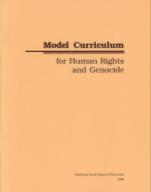
Published for the California State Board of Education
by the California Department of Education
ISBN 0-8011-0725-3
This Model Curriculum for Human Rights and Genocide, which serves as a guide for classroom teachers, supports the curriculum and instruction described in the framework. Pages 1-5 of this document contain a model that can be used by developers of curriculum. This section provides the philosophical bases for including studies on human rights and genocide in the curriculum, identifies places in the history-social science courses where learnings can be included, and poses questions that will engage students in critical thinking on this topic.
(more…)
Teaching the Armenian Genocide: Resources for Teachers, Students and Educators
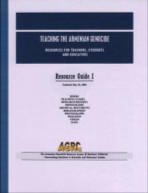
Published by the Armenian Genocide Resource Center (AGRC) of Northern California
This resource guide lists books, teaching guides, research reports, monographs, archival documents, bibliographies, photographs, websites, videos, and maps available on the Armenian Genocide.
Confronting Genocide: Never Again?

FROM THE CHOICES PROGRAM:
Overview of the Unit – The genocides of the twentieth century elicited feelings of horror and revulsion throughout the world. Yet both the international community and the United States have struggled to respond to this recurring problem.
(more…)
